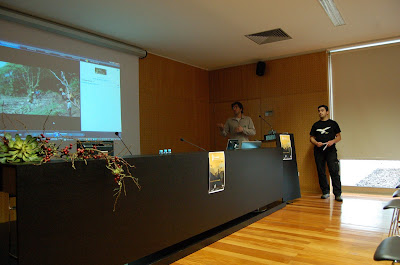The Environmental Centre of Priolo collaborated with the City Council of Nordeste in the commemoration of the International Day of Monuments and Sites.
Saturday, April 16th, a pedestrian trail was held in the unique and fascinating Planalto dos Graminhais. The participants got to know the important role of the peats of Graminhais in retaining and filtering water and the action taken to recover this rich and unique habitat in the Azores. The peats of Graminhais are composed by Sphagnum, locally known as Musgão, a bryophyte capable of holding 7 times its weight in water and filtering it of impurities, resulting in water supplies of high quality, in addition to protecting the soil from heavy rainfall.
8 people attended this celebration, among whom were a group of Scouts of Nordeste . Despite the unstable weather that has hit, without hesitation the scouts took the trail of the Planalto dos Graminhais towards Pico da Vara, an emblematic place of the region.
In the afternoon, the celebration of the International Day of Monuments and Sites have been accompanied by a lecture on the importance of peatlands, in the Centro Cultural Padre Manuel Raposo, municipality of Sto. Antonio Nordestinho. Here at the Cultural Center is also a Photo Exhibition of the Planalto dos Graminhais and Pico da Vara, from Pedro Monteiro, which you can visit from monday to thursday until April 29th, from 9am to 16 pm.
We thank all participants for your presence in the hope of having spent a great Day of Monuments and Sites.








